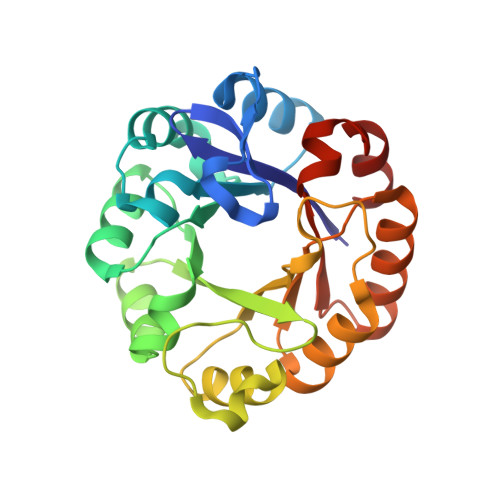Establishing Wild-Type Levels of Catalytic Activity on Natural and Artificial (Beta Alpha)8- Barrel Protein Scaffolds.
Claren, J., Malisi, C., Hocker, B., Sterner, R.(2009) Proc Natl Acad Sci U S A 106: 3704
- PubMed: 19237570
- DOI: https://doi.org/10.1073/pnas.0810342106
- Primary Citation of Related Structures:
2W79 - PubMed Abstract:
The generation of high levels of new catalytic activities on natural and artificial protein scaffolds is a major goal of enzyme engineering. Here, we used random mutagenesis and selection in vivo to establish a sugar isomerisation reaction on both a natural (beta alpha)(8)-barrel enzyme and a catalytically inert chimeric (beta alpha)(8)-barrel scaffold, which was generated by the recombination of 2 (beta alpha)(4)-half barrels. The best evolved variants show turnover numbers and substrate affinities that are similar to those of wild-type enzymes catalyzing the same reaction. The determination of the crystal structure of the most proficient variant allowed us to model the substrate sugar in the novel active site and to elucidate the mechanistic basis of the newly established activity. The results demonstrate that natural and inert artificial protein scaffolds can be converted into highly proficient enzymes in the laboratory, and provide insights into the mechanisms of enzyme evolution.
Organizational Affiliation:
Institute of Biophysics and Physical Biochemistry, University of Regensburg, Universitätsstrasse 31, D-93053 Regensburg, Germany.















